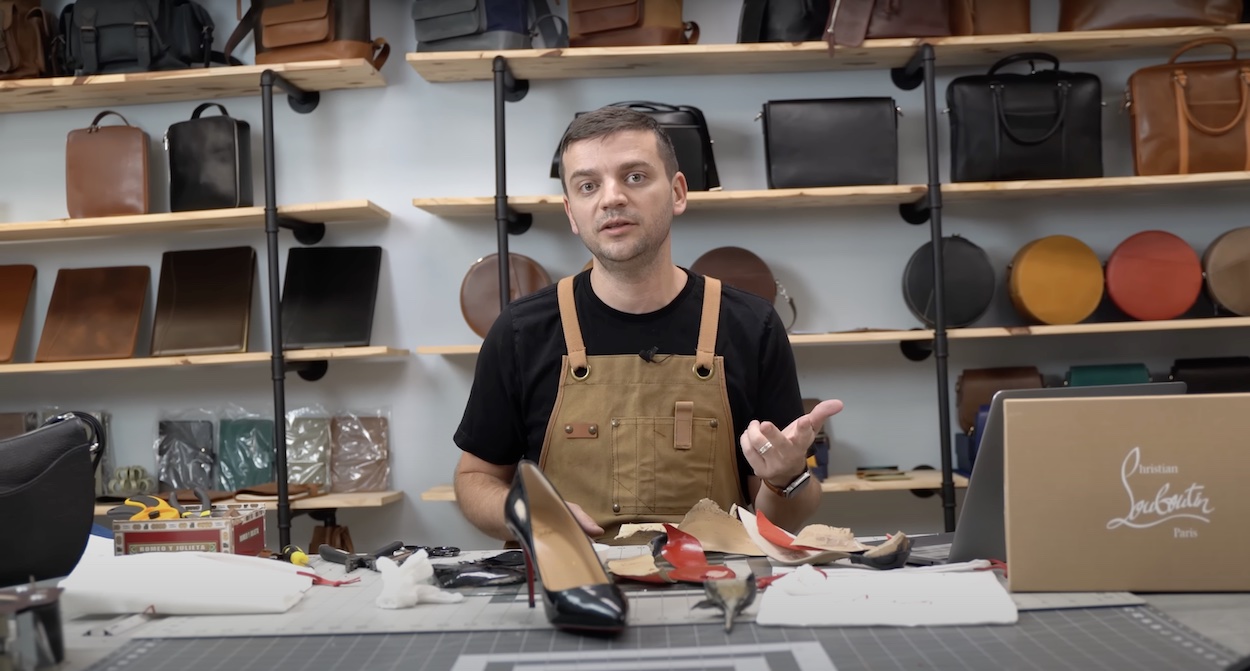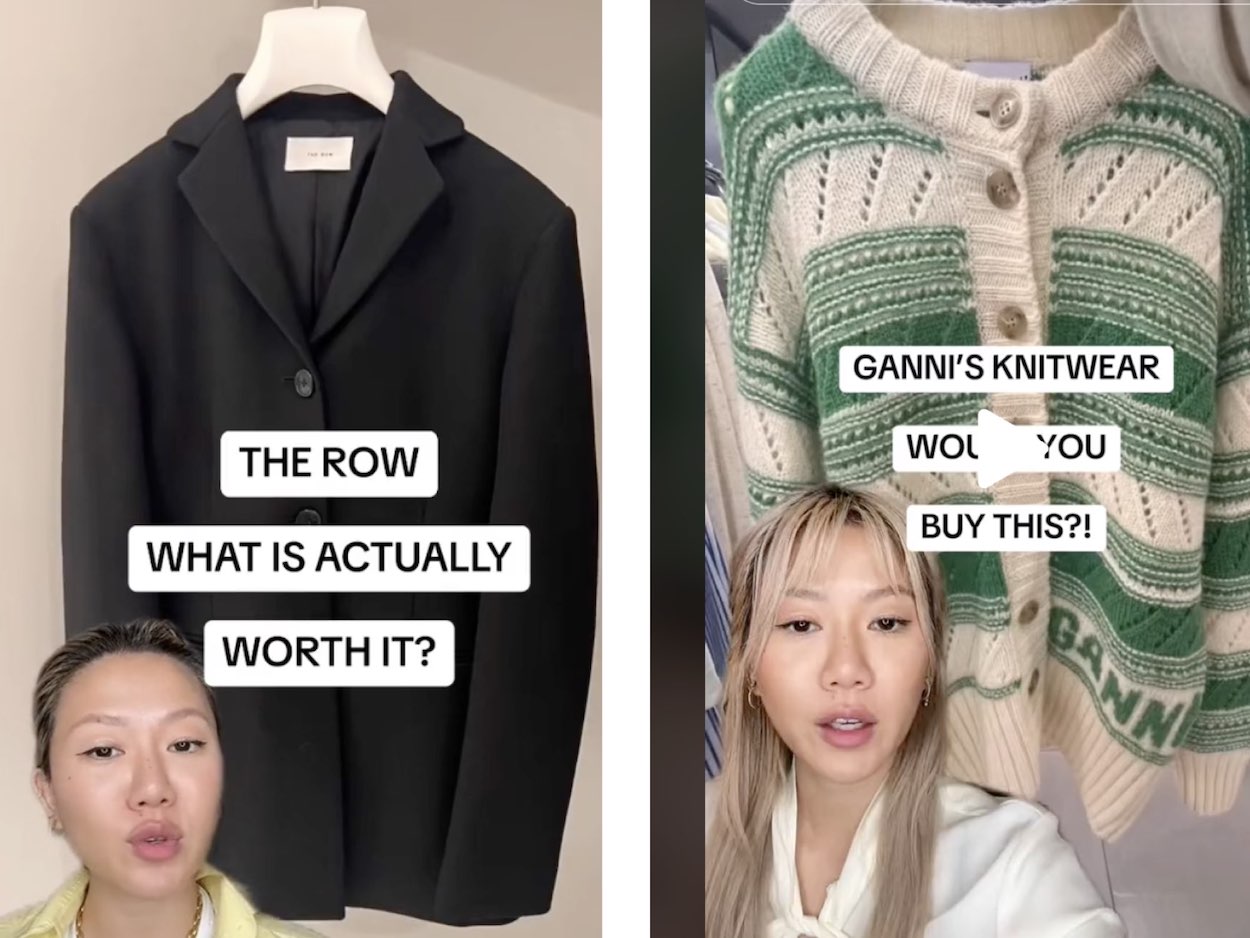Volkan Yilmaz, better known online as Tanner Leatherstein, has captivated more than 1.5 million followers across TikTok and Instagram by wielding a scalpel against all manner of bags, wallets, shoes, and belts from luxury fashion houses and mid-market brands. There’s a bit of a thrill to seeing Leatherstein rip the seams of a purse that costs more than many Americans’ monthly rents or even mortgages. But watch enough of his videos and you’ll notice that he never comments on whether each piece is “worth it.” Instead he estimates the cost of their materials and production, leaving the viewer to draw their own conclusions about the value of a markup of anywhere from three to ten times the cost of the thing.
“Overpaying may sound crazy to you and me, but for some, that’s what makes them love something even more,” Leatherstein says as he wrenches a red-bottomed sole from a pair of $795 Louboutin Pigalle pumps. “If you take a closer look, most luxury brands follow the same formula,” he continues. “Good quality, unique, and eye-catching design, and [a] hefty price tag. But if prestige isn’t your thing, there are quite a bit of affordable alternatives that offer great design and quality materials without breaking the bank.”
Other creators, like Why Don’t I Have Anything to Wear author Andrea Cheong, and pharmacist-by-day Jennifer Wang, wield criticism as their tools of choice, breaking down for their followers which items are “worth it,” or not, from fan-favorite brands. Instead of high-fashion houses, Cheong and Wang look at more accessible offerings from the likes of Reformation, COS, Mango, and Zara, as well as designer-adjacent brands like Sandro, Ganni, and Anine Bing (Cheong has also scrutinized true designer garments by The Row.) Creators like Cheong and Wang meet viewers where they—and their budgets—are, arming them with the knowledge needed to identify shoddy workmanship. After all, habits like analyzing fiber composition, and examining seams, snags, shedding, and loose threads, can all be second-nature to someone in the industry, but not necessarily to everyone else.
For those who already know their alpaca knits from acrylic-blend knitwear, fourth-generation dry cleaner Zach Pozniak dispenses wisdom from behind the handle of the family business @jeeves_ny. Though at least one Surface editor can vouch for the expertise of its cleaners, tailors, and couriers, Pozniak shows the ease with which hand-washing and some stain treating can be done at home. He even calls out high-end fashion houses, like Dior and Prada—twice—and Dolce & Gabbana, for their use of misleading laundry care tags and difficult-to-clean material combinations.
The opaque nature of algorithms makes it tough to tell just how prevalent these creators and those like them are. Still, it’s not hard to imagine a growing corner of the internet that has become fed up with the chasm between Shein hauls and paying four figures for a blouse that might not even come with the correct care instructions. With any luck, creators like these will democratize the process of actually finding those alternatives.


